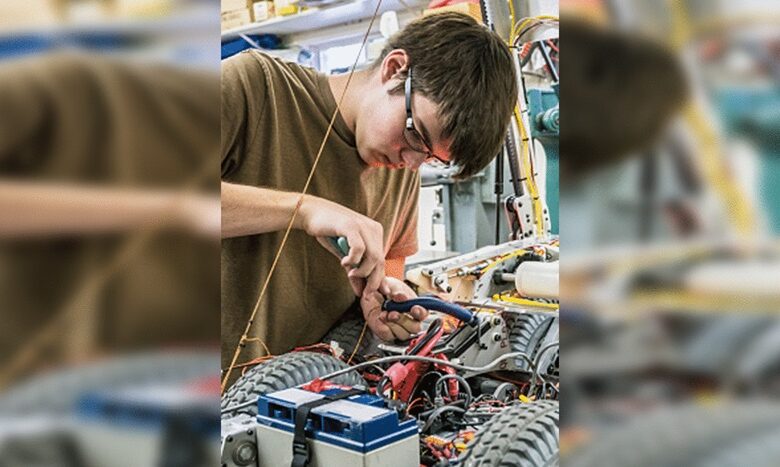MIT Scientists Achieve Breakthrough in Superconductivity with Atomically Thin Films

News Mania Desk/Agnibeena Ghosh/21st July 2024
Achieving superconductivity, characterized by zero electrical resistance at room temperature, remains a ‘holy grail’ in material science. This goal hinges on improving electron mobility, or the efficient movement of electrons, to minimize resistance. Scientists at the Massachusetts Institute of Technology (MIT) have made a significant breakthrough in this area by enhancing electron mobility through a novel approach.
Instead of traditional methods, MIT researchers utilized molecular beam epitaxy to create an ultra-thin film atom by atom. This meticulous technique allowed them to produce a material with remarkably low impurities and defects, thereby significantly boosting electron mobility. The research, published in ‘Materials Today Physics’, highlights the creation of a ternary tetradymite film that is only 100 nanometers thick. Despite its thinness, this material exhibits electron mobility levels previously unattained.
MIT’s Jagadeesh Moodera, a co-author of the study, explained the achievement using a vivid analogy. He compared past efforts in electron mobility to navigating traffic on a construction-clogged road—slow, messy, and frustrating. In contrast, the new material’s electron mobility is akin to driving on an open highway with no traffic, smooth and efficient.
This breakthrough is poised to be a game-changer for various advanced technologies, particularly thermoelectric devices and spintronic applications. Thermoelectric devices, which convert temperature differences directly into electrical voltage, could see enhanced efficiency and performance with improved electron mobility. Spintronics, a field of technology that exploits the intrinsic spin of electrons along with their charge, stands to benefit significantly from materials with superior electron mobility.
The MIT team’s success in creating this high-mobility material offers promising implications for future research and technological development. By reducing the material’s impurities and defects to unprecedented levels, they have paved the way for more efficient and practical applications of superconductivity at room temperature.
The potential applications of this advancement are vast. In thermoelectric devices, for instance, improved electron mobility can lead to more efficient energy conversion, which is crucial for sustainable energy solutions. Spintronic devices, which are integral to advanced computing and data storage technologies, could also see significant performance improvements, leading to faster and more efficient electronics.
Moreover, this breakthrough could influence the development of other technologies reliant on high electron mobility. Improved materials could lead to better-performing semiconductors, enhancing the speed and efficiency of electronic devices. In the realm of quantum computing, materials with high electron mobility are essential for creating stable qubits, the building blocks of quantum computers.
The MIT researchers’ innovative approach demonstrates the importance of molecular beam epitaxy in advancing material science. By meticulously constructing materials at the atomic level, scientists can achieve properties that were previously thought to be unattainable. This precision opens new avenues for research and development, pushing the boundaries of what is possible in various technological fields. This breakthrough not only advances our understanding of material science but also holds the potential to revolutionize multiple technological domains, from energy conversion to advanced electronics. As research continues, the implications of this discovery are likely to expand, offering new opportunities for innovation and development across a range of industries.






